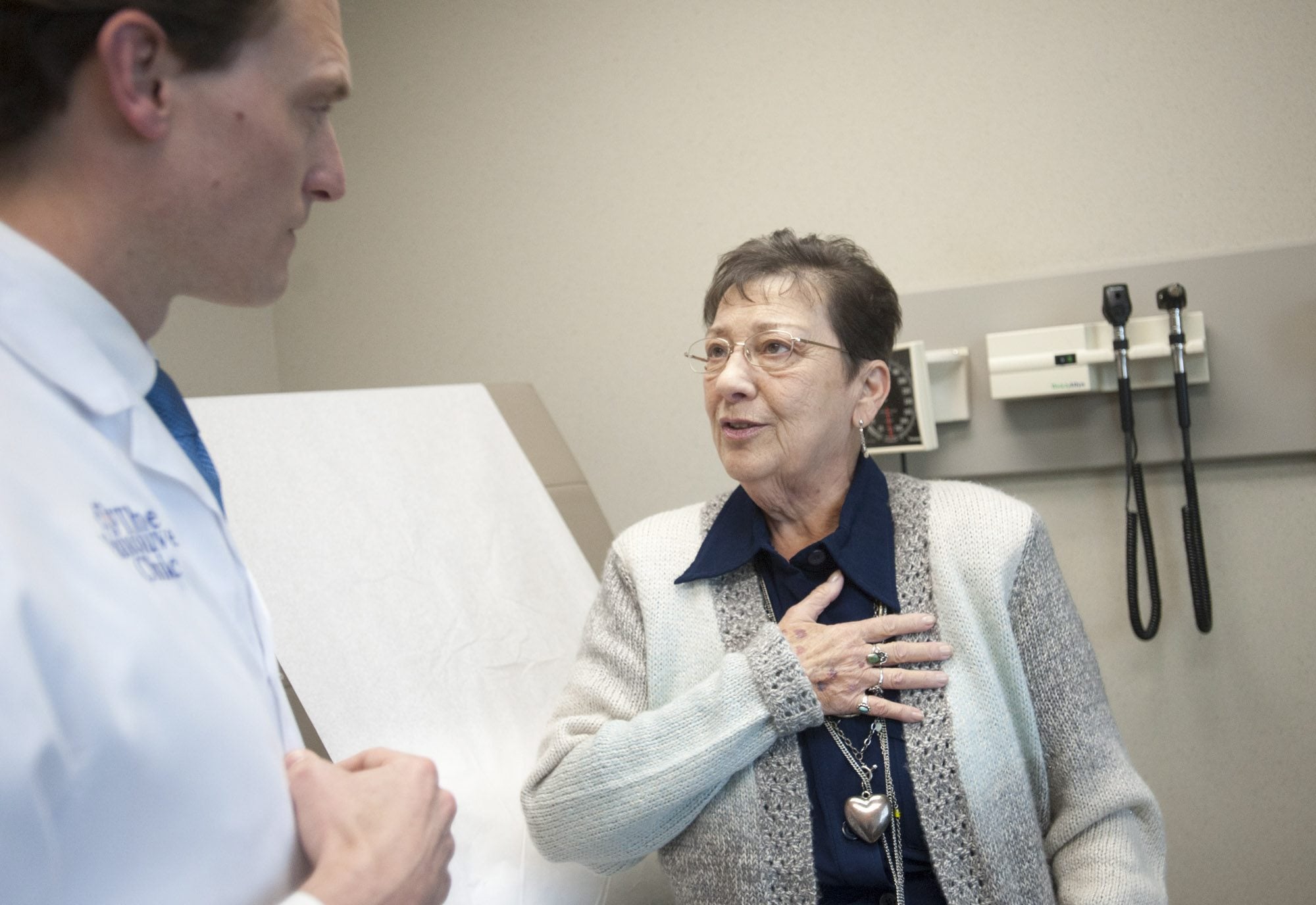Sharon Parks had no intention of undergoing another open-heart surgery.
The 69-year-old had her first major heart surgery in the 1990s, a triple bypass. The recovery, Parks said, was “extremely terrible.” She was in significant pain and laid up for weeks.
So when the Ryderwood woman learned she had severe aortic stenosis, which requires open-heart surgery to treat, Parks started looking for other options. Her physician learned that PeaceHealth Southwest Medical Center would soon be offering an alternative to the open-heart surgery — a less invasive procedure called transcatheter aortic valve replacement, or TAVR — and referred the Cowlitz County woman to local cardiologists.
Last month, Parks became the first person at PeaceHealth Southwest — and in all of Southwest Washington — to undergo the new TAVR procedure. And Parks couldn’t be happier with the outcome.
“I’ve had fabulous changes coming through here,” Parks said during a recent follow-up appointment at The Vancouver Clinic. “Life-changing stuff.”
Narrowing of aortic valve
Severe aortic stenosis is the narrowing of the aortic valve opening, preventing normal blood flow. As people age, calcium deposits can build up on the three leaflets of the aortic valve, causing aortic stenosis, said Dr. Nathan Boyer, an interventional cardiologist at The Vancouver Clinic. If the valve narrows too much, it can affect heart function and cause shortness of breath, chest pain and even heart failure, he said.
A surgical valve replacement is then required, Boyer said. Without a replacement, the survival rate is about 50 percent at two years and 20 percent at five years, he said.
After surgery, the survival rate jumps significantly. The problem, Boyer said, is replacing the aortic valve requires open-heart surgery. For elderly patients who often have other medical issues, open-heart surgery may not be an option, he said.
About 30 percent of patients with severe aortic stenosis cannot undergo the surgery, Boyer said. For those high-risk patients, the less-invasive catheter procedure affords them the benefits of valve replacement without the risk.
“Prior to this (procedure), it was a pretty grave diagnosis,” Boyer said. “We now have a piece of technology that can be offered to a rather large population.”
Survival rates for those who undergo the TAVR procedure are just as good as those who undergo open-heart surgery, and the procedure is easier to tolerate and recovery is easier, Boyer said.
That was welcome news to Parks.
After her open-heart surgery, Parks was out of work for about eight weeks. That time frame, Boyer said, is pretty typical. Patients who undergo the traditional valve replacement surgery are in the hospital four to seven days, several of those days in the intensive care unit, followed by five to seven weeks of recovery at home, he said.
With the TAVR procedure, patients are up and out of bed several hours after the procedure and return home within 48 hours, Boyer said. Once home, patients can resume daily-living activities. The only restriction is to not lift anything more than 10 pounds for 10 days as the incision site heals, he said.
Evolving technology
PeaceHealth Southwest is only the fourth hospital in the metro area to offer the procedure — the others are Oregon Health & Science University, Kaiser Sunnyside Medical Center and Providence St. Vincent Medical Center in the Portland area — and the only one in Southwest Washington, Boyer said.
“This is a pretty rare and unique procedure to offer here in Vancouver,” Boyer said.
Boyer and a heart valve team, which included a cardiac surgeon, performed Park’s TAVR procedure on Feb. 25.
Boyer used a catheter inserted in Parks’ femoral artery to place the aortic valve. Guided by X-ray and ultrasound images, Boyer positioned the valve inside the diseased native valve. The struts on the outside of the replacement valve attach to the calcium deposits inside the native valve, holding it in place, Boyer said.
“This technology is advancing so rapidly,” Boyer said. “It’s amazing.”
Before the procedure, Parks was experiencing shortness of breath and dizziness whenever she laid down, sat up or stood up. She also was uncomfortable lying on her left side and struggled to maintain her balance.
Since the procedure, Parks’ energy levels have climbed, and she’s no longer short of breath or dizzy. She’s even able to go on walks around the neighborhood and is considering joining a gym.
“I feel 10 years younger, I really do,” Parks said. “I got 10 years back.”




